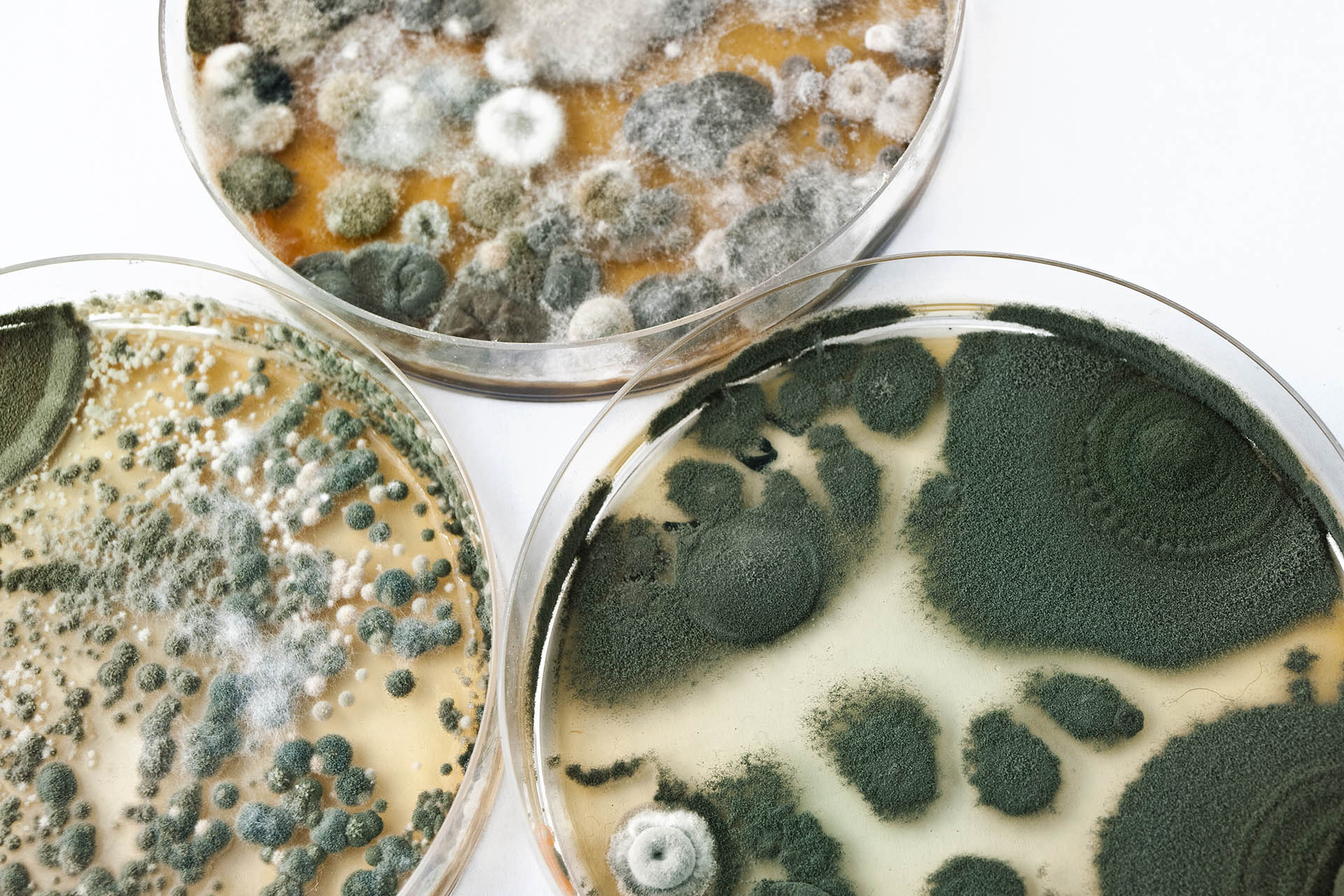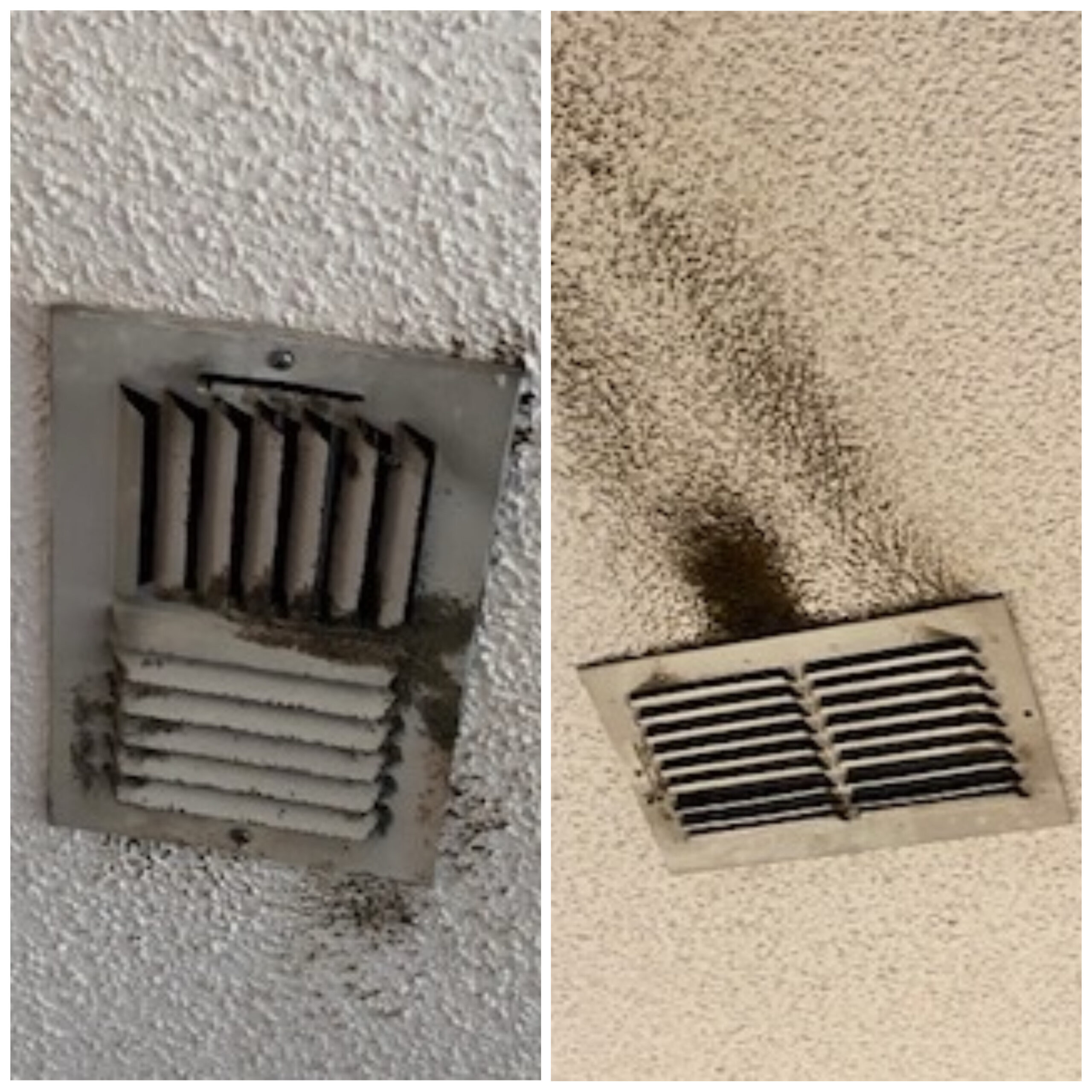Understanding Black Mold

Black mold, also known as Stachybotrys chartarum, is a type of fungus that can grow indoors, particularly in damp and humid environments. It’s commonly found in areas with water damage, poor ventilation, and high humidity levels. While not all molds are harmful, black mold is considered a serious health hazard due to its potential to produce mycotoxins, which are toxic substances that can cause a range of health problems.
Characteristics of Black Mold
Black mold is typically characterized by its dark green or black color, which often appears as a fuzzy or velvety patch. It can grow on various surfaces, including drywall, wood, carpets, and even clothing. The presence of black mold can often be detected by a musty or earthy odor.
Health Risks Associated with Black Mold, Causes of black mould on bedroom ceiling
Exposure to black mold can trigger a variety of health problems, especially in individuals with pre-existing respiratory conditions or allergies. Some common health risks associated with black mold exposure include:
- Respiratory problems: Black mold can cause coughing, wheezing, shortness of breath, and difficulty breathing, especially in individuals with asthma or other respiratory conditions.
- Allergic reactions: Mold spores can trigger allergic reactions, leading to symptoms like sneezing, runny nose, itchy eyes, and skin rashes.
- Mycotoxin poisoning: Black mold can produce mycotoxins, which can cause a range of health problems, including headaches, fatigue, nausea, dizziness, and neurological issues.
Common Types of Black Mold Found in Bedrooms
While Stachybotrys chartarum is the most common type of black mold found indoors, other types of mold can also pose health risks. Some of the common types of black mold found in bedrooms include:
- Aspergillus: This genus of mold is widespread and can cause a variety of health problems, including respiratory infections and allergic reactions.
- Penicillium: This type of mold is commonly found in damp environments and can produce mycotoxins that can cause respiratory problems and allergic reactions.
- Cladosporium: This type of mold is one of the most common allergens and can trigger allergic reactions, including sneezing, runny nose, and itchy eyes.
Conditions That Encourage Black Mold Growth
Black mold thrives in damp and humid environments. Several factors can contribute to its growth in bedrooms, including:
- Water damage: Leaky pipes, roof leaks, or flooding can create moisture problems that encourage black mold growth.
- Poor ventilation: Inadequate ventilation can trap moisture and create a favorable environment for mold growth.
- High humidity levels: Bedrooms with high humidity levels, especially during the summer months, are more susceptible to black mold growth.
- Condensation: Condensation on windows and walls can create moisture that encourages mold growth.
Causes of Black Mold on Bedroom Ceilings

Black mold, scientifically known as Stachybotrys chartarum, is a type of fungus that thrives in damp and humid environments. It is often found in areas with poor ventilation and excessive moisture, making bedroom ceilings a common breeding ground. Understanding the causes of black mold growth is crucial for preventing its formation and protecting your health.
Condensation
Condensation is a significant contributor to black mold growth on bedroom ceilings. When warm, moist air comes into contact with a cold surface, such as a ceiling, it cools and condenses into water droplets. This moisture creates a perfect breeding ground for mold spores.
- Poorly insulated ceilings: Inadequate insulation allows cold air from the attic to seep into the bedroom, creating a temperature difference between the air and the ceiling. This difference promotes condensation, especially during winter when the temperature gap is more significant.
- Lack of ventilation: When a bedroom lacks adequate ventilation, moisture from sources like showers, cooking, and breathing gets trapped, increasing humidity levels and encouraging condensation on the ceiling.
- Improperly sealed windows: Leaky windows allow cold air to enter, creating condensation on the cold glass and surrounding surfaces, including the ceiling.
Poor Ventilation and Lack of Air Circulation
Poor ventilation and lack of air circulation play a crucial role in creating an environment conducive to black mold growth.
- Inadequate exhaust fans: Bathroom exhaust fans are essential for removing moisture from the air after showering. If the fan is malfunctioning or absent, the moisture remains trapped, increasing humidity levels and promoting mold growth.
- Closed windows: While it is important to maintain a comfortable temperature, keeping windows closed all the time can trap moisture and create a humid environment. Opening windows for short periods, especially after showering or cooking, helps to ventilate the room and reduce humidity.
- Lack of air movement: Even with adequate ventilation, stagnant air can contribute to moisture buildup. Using fans or opening doors to create air movement helps circulate air and reduce humidity.
Leaky Roofs
Leaky roofs are a major cause of black mold on bedroom ceilings. When rainwater seeps into the attic or directly into the bedroom, it creates a damp environment that encourages mold growth.
- Damaged roof shingles: Worn-out or damaged shingles can allow rainwater to penetrate the roof, leading to leaks and subsequent mold growth.
- Clogged gutters: Overflowing gutters can cause water to back up against the roof, leading to leaks and mold growth.
- Improper roof flashing: Flashing is a metal material that helps to seal the roof around chimneys and other protrusions. If flashing is damaged or improperly installed, it can allow water to seep in and cause leaks.
Plumbing Issues
Plumbing issues, such as leaky pipes or faulty faucets, can also contribute to black mold growth on bedroom ceilings. Leaking pipes can create a continuous source of moisture, leading to mold growth in the surrounding areas, including the ceiling.
- Leaking pipes: Pipes that are corroded, cracked, or improperly installed can leak water, creating a damp environment that encourages mold growth.
- Faulty faucets: Leaky faucets can drip water continuously, increasing humidity levels and promoting mold growth.
- Condensation from plumbing: Even if pipes are not leaking, condensation can form on cold pipes, especially during hot weather. This moisture can create a breeding ground for mold.
Preventing and Removing Black Mold: Causes Of Black Mould On Bedroom Ceiling

Black mold is a common problem in homes, particularly in humid environments. Understanding its causes is essential, but preventing and removing it is equally crucial for maintaining a healthy living space.
Preventing Black Mold Growth
Preventing black mold growth is key to maintaining a healthy and mold-free home. By addressing the underlying causes and implementing preventative measures, you can minimize the risk of black mold infestation.
- Control Humidity: Humidity levels above 60% create a favorable environment for mold growth. Use dehumidifiers, especially in damp areas like bathrooms and basements, to maintain humidity levels below 50%.
- Proper Ventilation: Ensure adequate ventilation in your home by using exhaust fans in bathrooms and kitchens, opening windows for fresh air circulation, and using air conditioners to reduce humidity.
- Promptly Address Leaks: Repair leaks in roofs, pipes, and windows immediately. Moisture from leaks provides a breeding ground for mold.
- Regular Cleaning: Clean bathrooms, kitchens, and other areas prone to moisture regularly. Use a bleach solution to disinfect surfaces and prevent mold growth.
- Regular Inspections: Inspect your home regularly for signs of mold, especially in areas with high humidity or potential leaks.
Removing Black Mold from Bedroom Ceilings
Removing black mold from bedroom ceilings requires a methodical approach to ensure thorough cleaning and prevent future growth.
- Safety First: Wear protective gear, including gloves, a mask, and eye protection, to prevent exposure to mold spores.
- Identify the Source: Determine the source of the moisture that led to mold growth. Address the source before attempting removal.
- Prepare the Area: Cover furniture and belongings in the room to protect them from cleaning solutions.
- Clean the Ceiling: Use a stiff-bristled brush to scrub the moldy area. Apply a cleaning solution, such as a bleach solution or a commercial mold cleaner, and let it sit for 10-15 minutes.
- Rinse and Dry: Rinse the area thoroughly with clean water and allow it to dry completely.
- Repeat if Necessary: If the mold reappears, repeat the cleaning process.
- Professional Help: For extensive mold infestations or if you’re unsure about the removal process, consult a professional mold remediation specialist.
Cleaning Solutions for Black Mold Removal
| Cleaning Solution | Description | Advantages | Disadvantages |
|---|---|---|---|
| Bleach Solution | Mix 1 cup of bleach with 1 gallon of water. | Effective in killing mold spores. | Can damage some surfaces. |
| Commercial Mold Cleaner | Available at most hardware stores. | Designed for mold removal. | May contain harsh chemicals. |
| Baking Soda Paste | Mix baking soda with water to form a paste. | Natural and non-toxic. | May not be as effective as bleach. |
| Tea Tree Oil | Dilute tea tree oil with water. | Natural antifungal properties. | Can be irritating to the skin. |
Ventilating the Bedroom
Proper ventilation is crucial for preventing future black mold growth in your bedroom.
- Exhaust Fans: Install and use exhaust fans in bathrooms and kitchens to remove moisture from the air.
- Open Windows: Open windows for at least 30 minutes each day to allow fresh air circulation and reduce humidity.
- Air Conditioner: Use an air conditioner to reduce humidity levels, especially during humid weather.
- Dehumidifier: Use a dehumidifier to remove excess moisture from the air, especially in damp areas.
